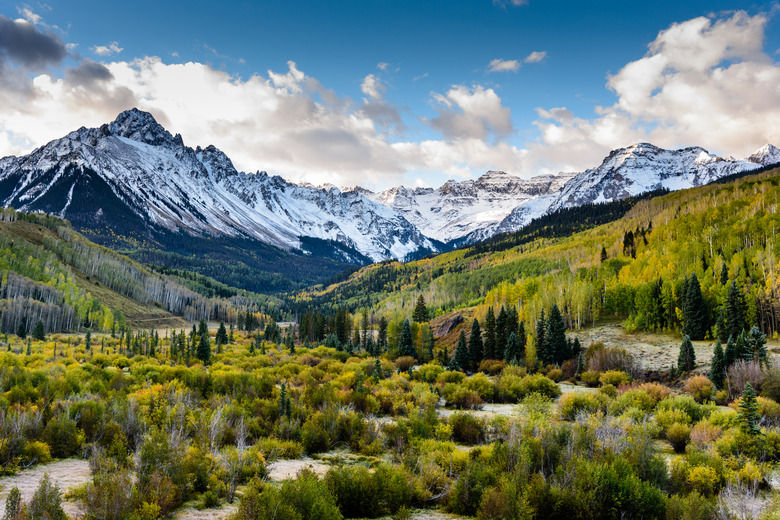How Does Elevation Affect Weather?
Virtually all of Earth's weather occurs in the troposphere, which contains about 75 percent of the total mass of the atmosphere and about 99 percent of the water vapor. The troposphere extends from the ground to an elevation of about 10 miles (16 kilometers) at the equator and 5 miles (8 kilometers) at the poles. On average, it rises just a little higher than Mt. Everest. Throughout the troposphere, temperature and air pressure decrease with increasing elevation, so rain and snow are more common at higher elevations than at sea level. Once you pass the tropopause, or the top layer of the troposphere, and enter the stratosphere, temperature begins to increase with elevation, but the air is too thin to create weather patterns at that height.
TL;DR (Too Long; Didn't Read)
Weather in the upper troposphere tends to be colder, windier and wetter than at lower elevations.
Average Temperature Gradient
Average Temperature Gradient
The upper layers of the atmosphere reflect much of the sun's energy back into space, but the energy that isn't reflected reaches the ground and heats it. This heat is absorbed by the air at ground level, and temperatures are highest there. As the elevation increases, the temperature drops at an average rate of 3.6 degrees Fahrenheit per 1,000 feet (6.5 degrees Celsius per 1,000 meters). The temperature at an elevation of 25,000 feet (7,620 meters) is, on average, 90 F (50 C) colder than at sea level, which is why mountain climbers need so much cold-weather gear.
Wind, Rain and Snow
Wind, Rain and Snow
Warm air is lighter than cold air, so the air at ground level tends to rise, displacing the cold air at higher elevations, which falls. This creates convection currents throughout the troposphere, and they are more predominant at higher elevations, where the air is less dense and can move more freely. Consequently, winds are stronger at higher elevations. Colder temperatures at higher elevations also create precipitation, because cold air can't hold as much moisture as warm air. Moisture condenses out of the air as snow and ice, and it falls back to the ground. At lower elevations, where the temperature is warm, it turns to rain, but that doesn't happen at higher elevations where the temperature hasn't risen above freezing.
The Mountain Effect
The Mountain Effect
Convection currents caused by the exchange of warm and cold air flow upward along the windward sides of mountain slopes, creating strong eddy currents near the peaks. Water condenses from the air at higher elevations and forms clouds, which often blanket tall peaks and hide them altogether. Rain and snow fall as the clouds become saturated with moisture. The precipitation combines with the strong winds to create frequent stormy weather conditions. Meanwhile, on the leeward side of mountain slopes, conditions are often unusually dry, because the clouds that reach there don't have enough moisture for condensation to occur.
Inversion Layers
Inversion Layers
The surface of the earth isn't uniformly warm, and at night, or near the sea coast, the ground temperature can be cooler than that at higher elevations. Cool air doesn't rise, so the air becomes stagnant. This condition, which is called an inversion layer, can persist for days or weeks at a time, and when it occurs near an urban area, it can trap smog and pollutants, creating hazardous conditions for people with respiratory sensitivities.
Cite This Article
MLA
Deziel, Chris. "How Does Elevation Affect Weather?" sciencing.com, https://www.sciencing.com/elevation-affect-weather-4630/. 17 April 2018.
APA
Deziel, Chris. (2018, April 17). How Does Elevation Affect Weather?. sciencing.com. Retrieved from https://www.sciencing.com/elevation-affect-weather-4630/
Chicago
Deziel, Chris. How Does Elevation Affect Weather? last modified March 24, 2022. https://www.sciencing.com/elevation-affect-weather-4630/
